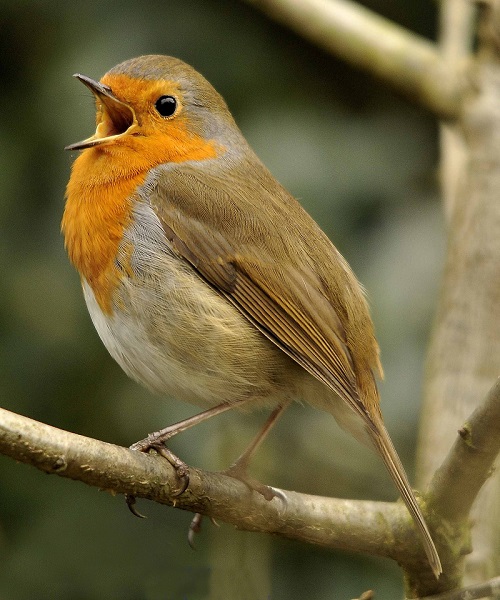May 2018
I’m standing on the dew-drenched grass of Idle Valley Nature Reserve, my local Wildlife Trust site. Before me a lake lies dormant, a silver mirror reflecting the pre-dawn sky, dotted with the silhouettes of sleeping ducks. Even at this early hour, as much of the wild world slumbers, the still air is far from silent.
The nasal laughter of lesser black-backed gulls fills the morning, as if seeking to provoke a reaction from the slowly-wakening songbirds. Soon the first stirrings of the morning symphony can be heard. Blackbirds and robins sing sweetly from the tangled brambles, but the clear voice of the song thrush rings loudest; two males sing against each other, vying for vocal dominance. Each sings with such variety he sounds like several birds, bold phrases repeated in threes, fours and even fives, spurred to new heights by the competition.
As the glittering stars disappear and the sky fades from black to a deep blue-grey, the rumbling purr of a woodpigeon joins the chorus, interrupted briefly by the haunting call of a tawny owl. Just after five, the first chiffchaff finds his voice, tentative at first, but quickly growing in confidence. He proclaims his name from a tall strand of willows, “chiff chaff chaff, chiff chaff chaff, chiff chaff!”
The eastern horizon is now a blaze of orange, colour flooding into the brightening sky, adding new texture as a blanket of clouds is rendered in pastel light. Amongst the growing symphony, the soft voice of the dunnock is almost lost: a melodic ripple, every bit as beautiful as the more celebrated song of the robin.
It’s sunrise before the first blackcap begins to warm up his instrument. Starting as a scratchy, wavering mumble, his voice soon rises to the crystal clarity of a flute. Within minutes his challenge is met, other males joining in and carrying the chorus to new and wondrous heights, a dozen species greeting the day in unison.
As the sky brightens and the shadows retreat, the dawn chorus gradually fades, the early singers slipping off to find some hard-earned breakfast. In spring, the song never dies out completely as birds sing throughout the day, staking claim to territories and demonstrating their prowess to passing females. But these daylight serenades never reach the magical crescendo of those precious moments around dawn.

Image: Steve Waterhouse
It’s never easy to escape the warmth of your bed in the early morning, but the dawn chorus has to be experienced to be believed. Just a snatch of birdsong is enough to rouse a smile and create a connection to the wild world around us, even in the heart of urban areas. During the dawn chorus, this soul-stirring sound washes over you from every direction.
International Dawn Chorus Day is an annual event celebrating nature’s symphony, held on the first Sunday of May. All around the world, people rise with the lark to experience this natural wonder for themselves. Why not join them and embrace the dawn? Head to your local wild spot, or simply open a window and let the chorus come to you – even cities have their songbirds!
This year, Dawn Chorus Day falls on Sunday the 6th of May, and you’ll find a selection of events and guided walks on our website www.wildlifetrusts.org/dawnchorusday. More information about wildlife, including other inspiring wild experiences, can be found at www.wildlifetrusts.org.
Tom Hibbert, Communications Support Officer for The Wildlife Trusts
Follow @TomHibbert54 & @WildlifeTrusts
A keen birdwatcher, Tom Hibbert has been communications support officer for The Wildlife Trusts for the last year. Prior to that, he worked as an assistant ranger monitoring breeding seabirds on the east coast of England.
The opinions expressed in this blog are the author's and not necessarily those of the wider Link membership.




Latest Blog Posts